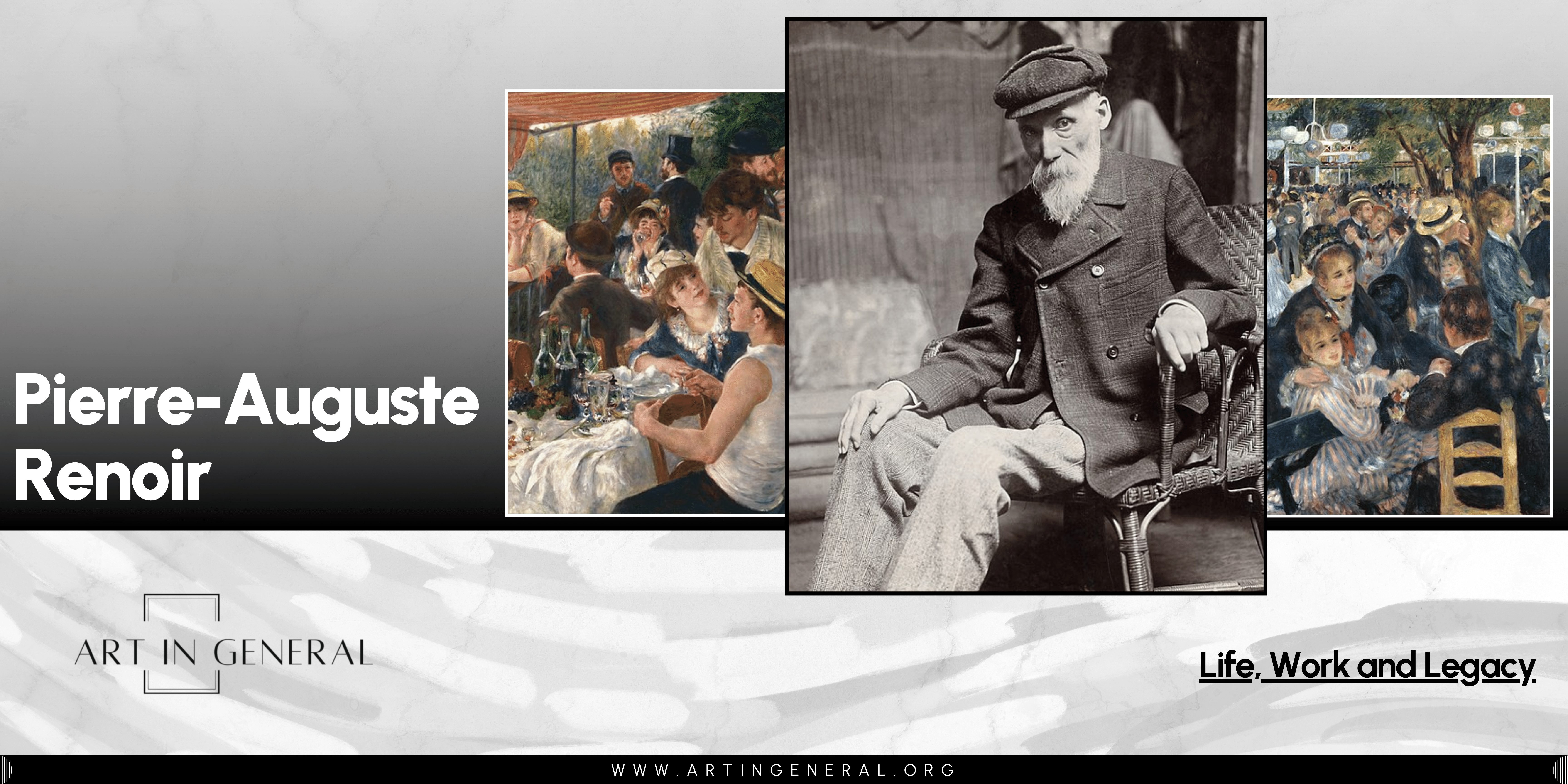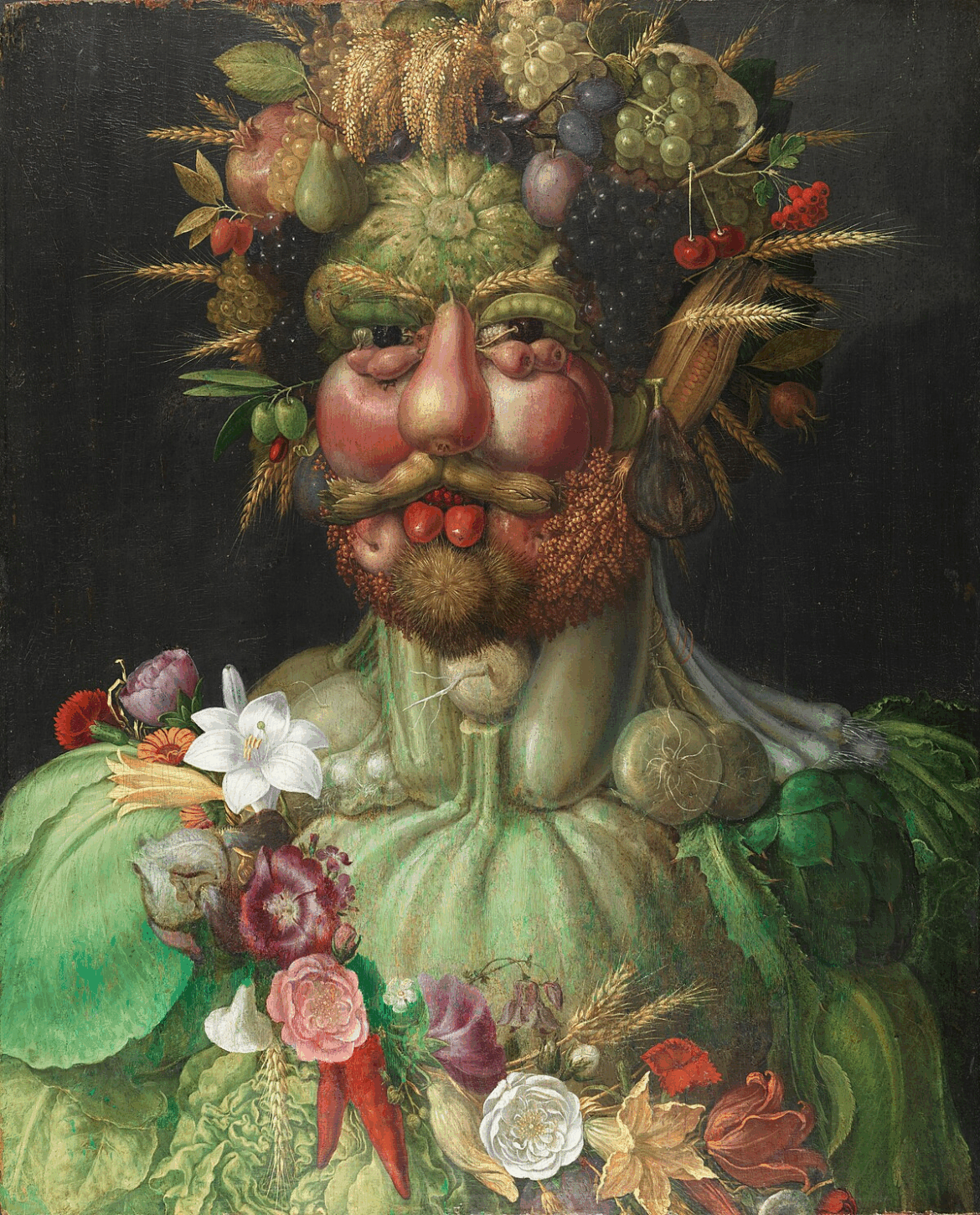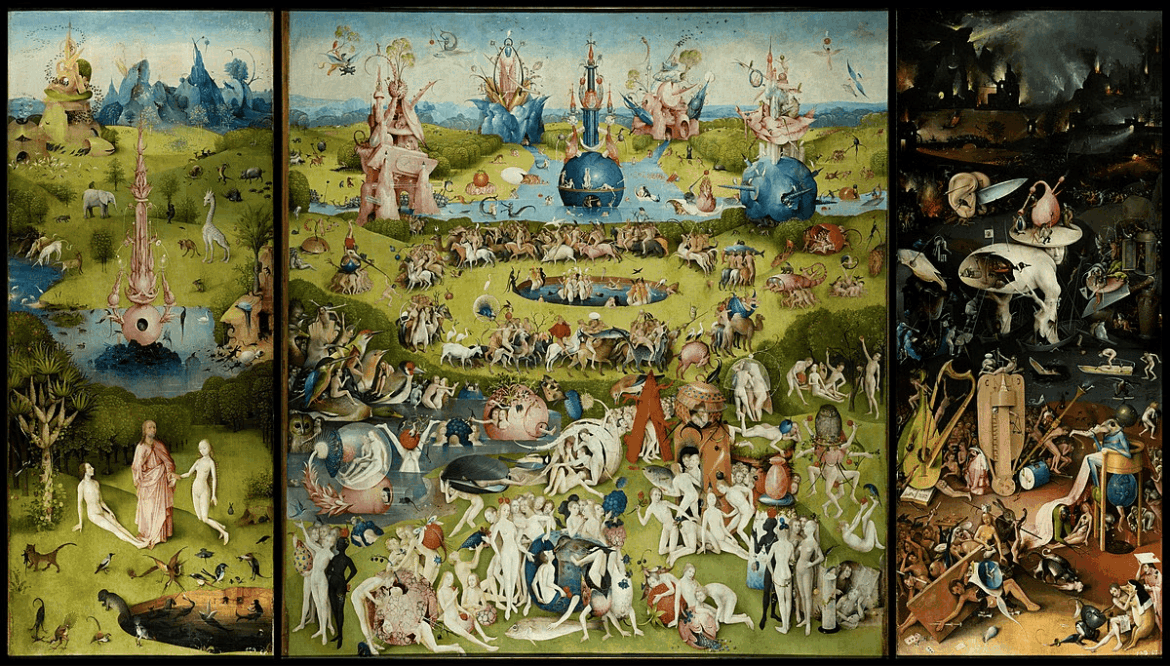Early Life
Pierre-Auguste Renoir was born on February 25, 1841, in Limoges, France. He was the sixth child in a family of modest means. His father was a tailor, and his mother was a seamstress. When Renoir was three years old, his family moved to Paris in search of better opportunities. Growing up in the bustling capital, Renoir showed a keen interest in the arts from a young age, which his family supported despite their limited resources.
Renoir’s artistic talent became evident during his childhood. He began painting designs on porcelain at the age of 13, working in a local porcelain factory. This early exposure to decorative arts honed his skills and nurtured his love for painting. Inspired by the classical masterpieces he saw in the Louvre, Renoir saved money to pursue formal artistic training, eventually enrolling in evening drawing classes.
Artistic Development
In 1862, Renoir gained admission to the prestigious École des Beaux-Arts in Paris. There, he studied under Charles Gleyre, a respected Swiss artist who also mentored future Impressionists like Claude Monet, Alfred Sisley, and Frédéric Bazille. During this time, Renoir was deeply influenced by the works of the Old Masters, as well as by the innovative techniques of his contemporaries.
Renoir’s early works were characterized by a traditional style, reflecting his academic training. His first significant exhibition was at the Paris Salon in 1864, where he presented a painting titled “Esmeralda Dancing with Her Goat.” Although his early works received mixed reviews, Renoir remained committed to developing his unique style, experimenting with light and color to create vibrant, lifelike scenes.
Impressionist Movement
Renoir’s artistic journey took a decisive turn in the early 1870s when he became one of the founding members of the Impressionist movement. Alongside artists like Monet, Sisley, and Camille Pissarro, Renoir sought to break away from the rigid conventions of academic painting. They aimed to capture the fleeting effects of light and atmosphere in their work, often painting en plein air (outdoors) to achieve a more immediate and spontaneous expression.
In the 1880s, Renoir’s style began to evolve as he sought new artistic challenges. Moving away from the loose, spontaneous brushwork of his earlier works, he embraced a more refined, classical approach. This period saw him exploring different genres, including portraiture, landscapes, and nudes. His paintings became more structured, with a greater emphasis on form and composition.
Major Works and Achievements
During his mature period, Renoir produced some of his most iconic works. “The Bathers” (1887) and “The Large Bathers” (1884-1887) are prime examples of his classical style, featuring harmonious compositions and soft, flowing lines. Despite the changes in his technique, Renoir’s work continued to be celebrated for its beauty and emotional warmth. He received numerous accolades, including the prestigious Legion of Honor in 1900.
Dance at Le Moulin de la Galette (1876)

“Dance at Le Moulin de la Galette,” also known as “Bal du moulin de la Galette,” is one of Renoir’s most celebrated masterpieces. Painted in 1876, this work captures a lively Sunday afternoon at the Moulin de la Galette, a popular dance hall and café in the Montmartre district of Paris.
The painting is a vibrant depiction of Parisian social life, filled with dancing couples and groups of friends enjoying themselves under the dappled sunlight. Renoir masterfully captures the movement and atmosphere of the scene, using loose brushstrokes and bright colors to convey the joyous ambiance. The play of light and shadow, particularly on the figures and their clothing, adds depth and a sense of realism to the composition.
“Dance at Le Moulin de la Galette” is a quintessential example of Renoir’s Impressionist style. It showcases his ability to capture the ephemeral effects of light and his interest in depicting contemporary life. The painting’s dynamic composition and vibrant color palette make it a standout work in the Impressionist canon, embodying the movement’s focus on modernity and the celebration of leisure.
Luncheon of the Boating Party (1881)

“Luncheon of the Boating Party” is another iconic painting by Renoir, completed in 1881. This work depicts a group of Renoir’s friends relaxing on a balcony at the Maison Fournaise restaurant along the Seine River in Chatou, France.
The painting features a diverse group of individuals engaged in lively conversation, enjoying food and drink amidst the picturesque riverside setting. Renoir’s skillful use of color and light is evident in the way he captures the sunlight filtering through the awning and the reflections on the water. The figures are rendered with great attention to detail, each with distinct expressions and poses that convey a sense of intimacy and camaraderie.
“Luncheon of the Boating Party” is celebrated for its rich, warm color palette and its portrayal of a carefree, leisurely moment. The painting exemplifies Renoir’s talent for capturing the beauty of everyday life and his ability to bring a sense of vibrancy and warmth to his compositions. It is often regarded as one of the finest examples of Impressionist painting, showcasing Renoir’s mastery of light and atmosphere.
The Bathers (1887)

“The Bathers” (1887) represents a significant departure from Renoir’s earlier Impressionist works, showcasing his evolution towards a more classical style. This painting is one of several large-scale works that Renoir created during this period, depicting nudes in natural settings.
“The Bathers” features a group of women bathing and lounging by a riverbank, set against a lush, idyllic landscape. The figures are rendered with soft, flowing lines and a sculptural quality that reflects Renoir’s admiration for classical art. The painting’s harmonious composition and gentle, pastel color palette create a serene and timeless atmosphere.
“The Bathers” marks a transitional period in Renoir’s career, where he sought to reconcile the spontaneity of Impressionism with the discipline of classical art. This work is notable for its refined technique and its exploration of the human form, demonstrating Renoir’s continued commitment to artistic innovation. “The Bathers” is a testament to his versatility and his ability to adapt and evolve his style while maintaining his distinctive artistic vision.
Personal Life
In 1890, Renoir married Aline Charigot, a model who had appeared in several of his paintings. The couple had three sons, one of whom, Jean Renoir, would later become a renowned filmmaker. Renoir’s family life brought him great joy, and his wife and children often featured in his paintings, adding a personal and intimate dimension to his work.
In his later years, Renoir faced significant health challenges, including severe rheumatoid arthritis. Despite his physical limitations, he continued to paint, adapting his techniques to accommodate his condition. He strapped brushes to his hands and worked with the help of assistants, demonstrating his unwavering dedication to his art.
Legacy
Pierre-Auguste Renoir’s influence on the art world is immeasurable. His contributions to the Impressionist movement helped redefine modern painting, paving the way for future generations of artists. Renoir’s ability to capture the beauty and vibrancy of everyday life resonated with audiences, and his work continues to inspire and delight art lovers around the world.
Renoir’s masterpieces are housed in major museums and collections worldwide, including the Musée d’Orsay in Paris, the Metropolitan Museum of Art in New York, and the National Gallery in London. His enduring popularity is evident in the ongoing exhibitions and retrospectives dedicated to his work, ensuring that his legacy remains vibrant and influential.







Leave a Reply